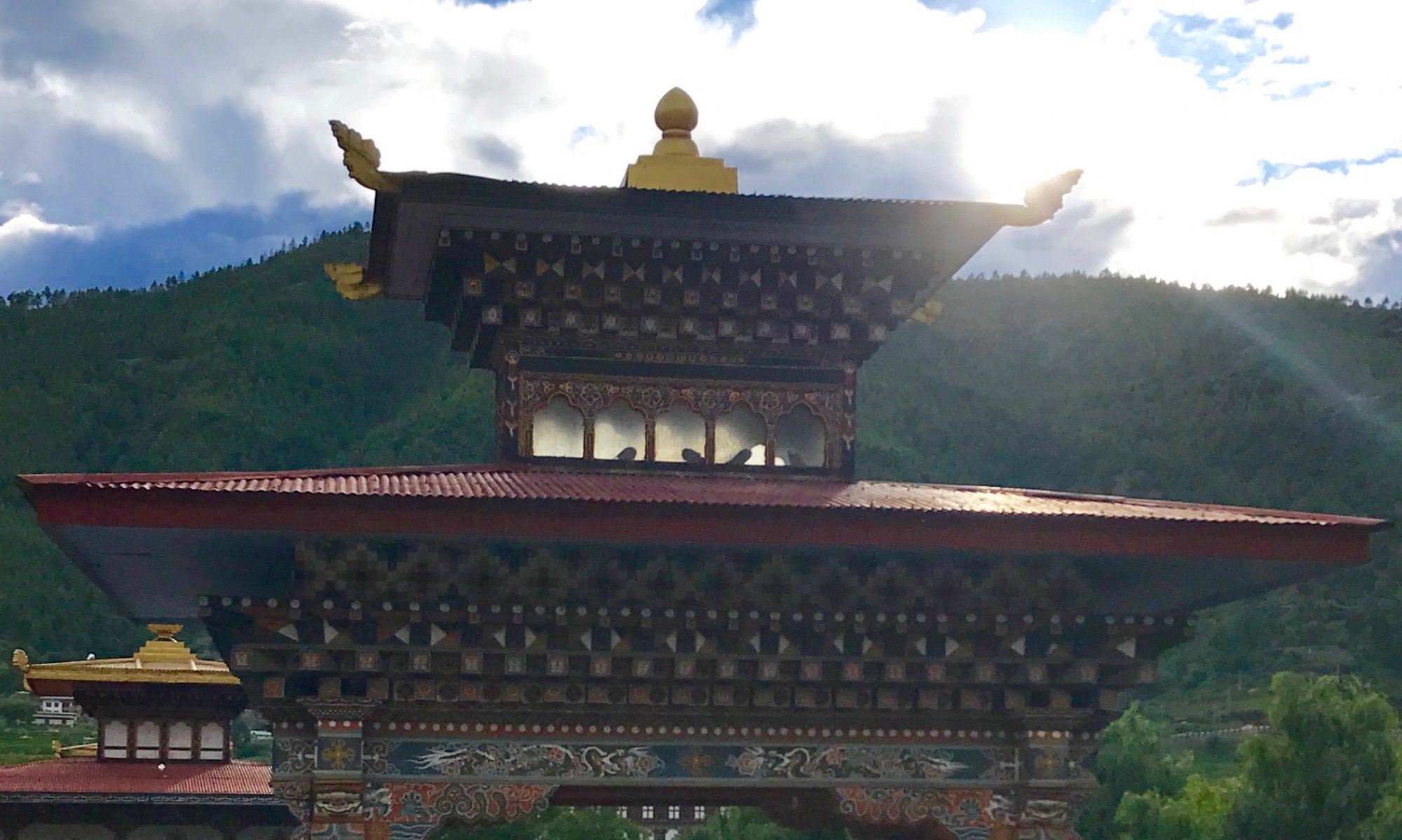No one else in the family was interested in attending the dress rehearsal, so I climbed up to Yonphula by myself.
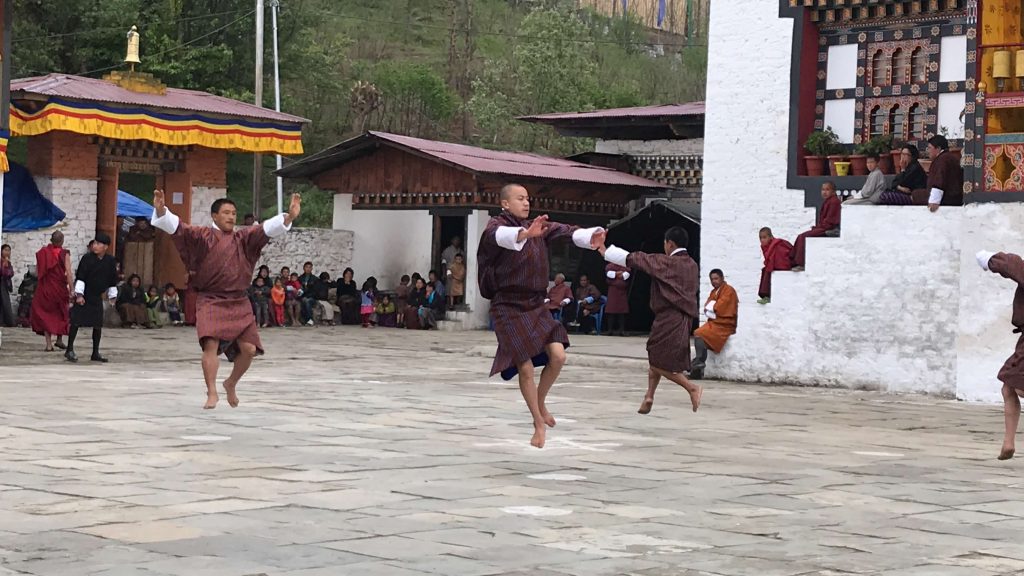
As Namgay Tashi had told me, the dancers wore specialized outfits for the dress rehearsal: a special gho for the lay dances, and special robes for the monk dances.
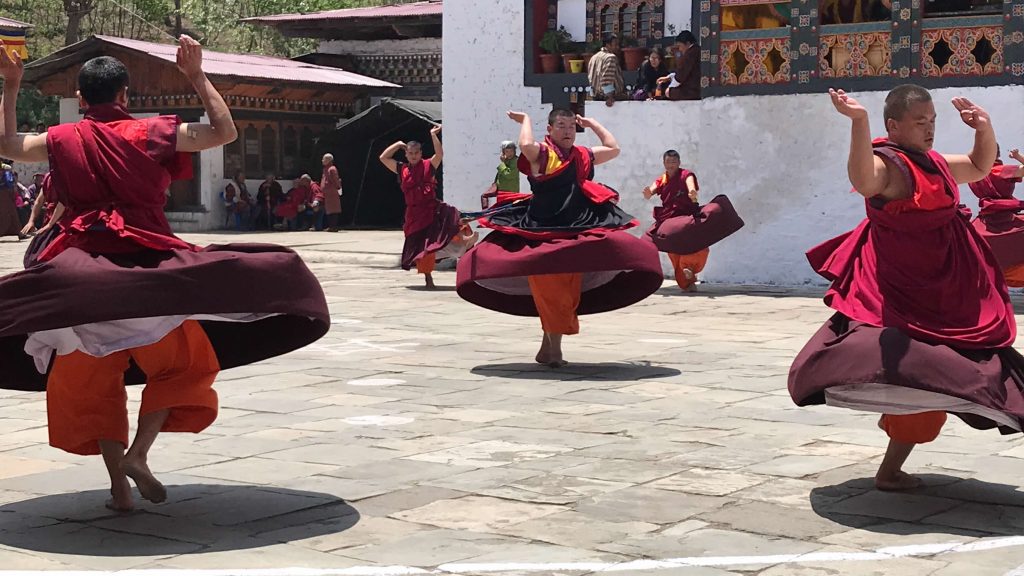
The first day of the tsechu proper started with the dance of the stags, followed by the black hat dance.
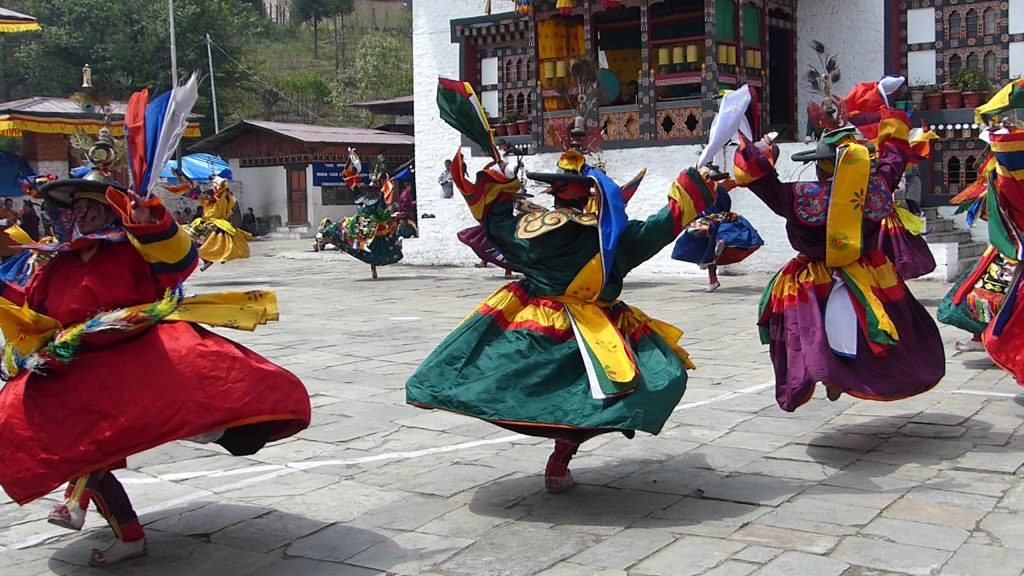
Guru Rinpoche introduced the Black Hat Dance during the construction of Samye monastery in Tibet in the 8th century. It represents 21 wrathful and peaceful tutelary deities.
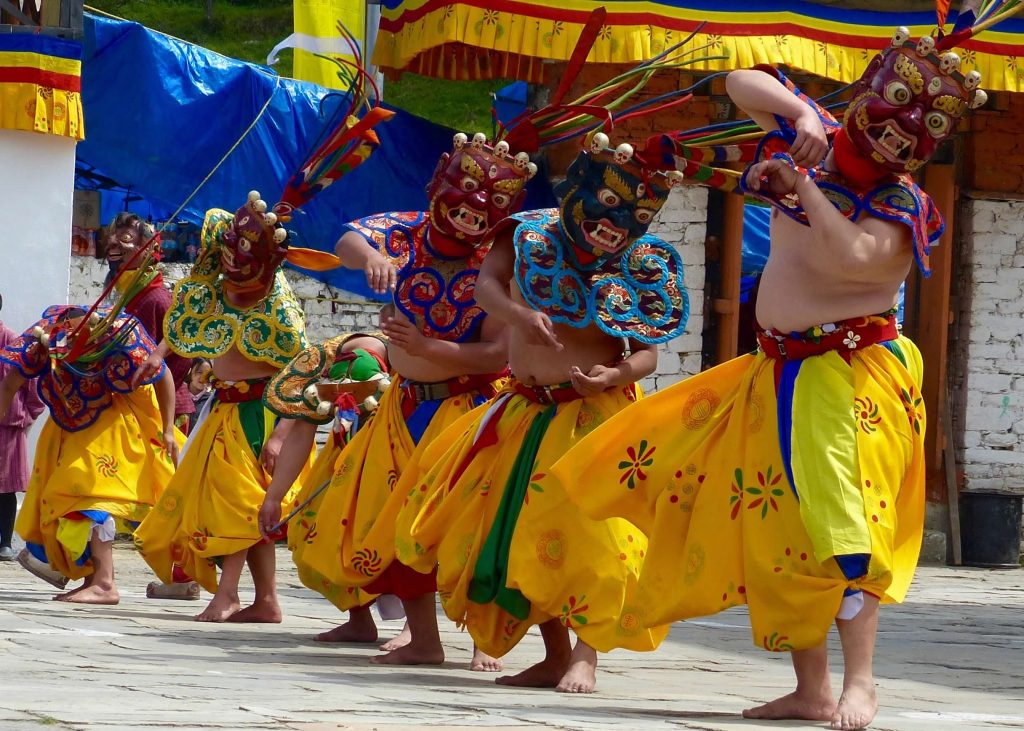
The Gings appear in three dances from Drametse: with sticks, with swords, with drums. Here, they have laid down their swords.
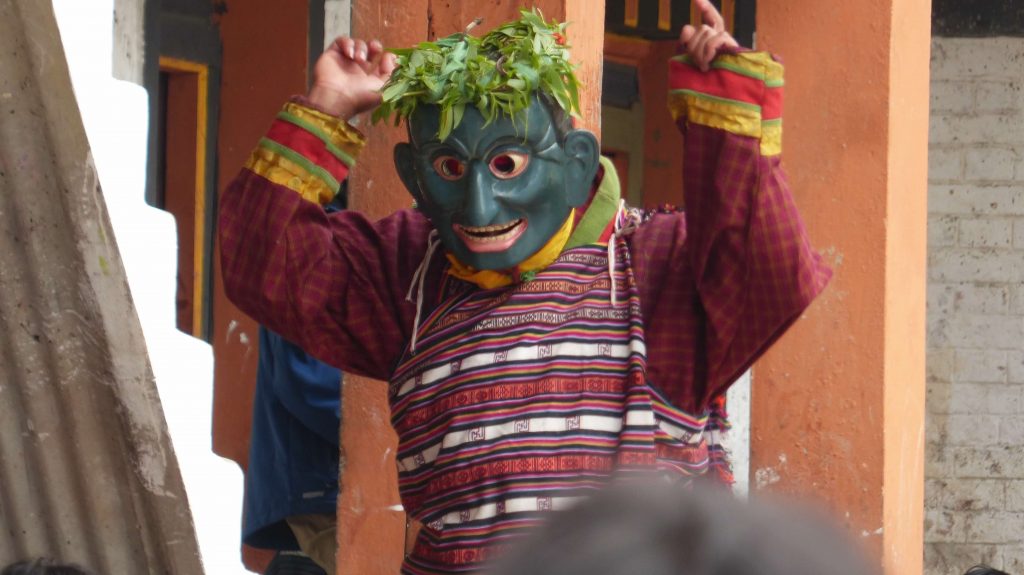
This figure, who I think of as the Green Man, started wandering the edges of the courtyard during the Dance of the Gings with swords. By the afternoon, he is primed to play a key role in a different dance: the Dance of Stag and Hound. The dance tells the story of Milarepa’s encounter with the notorious hunger Chirawa Gonpo Dorji. Milarepa was engaged in “River-flowing samadhi” (a meditation practice on non-attachment) at Ghadaya hermitage between Nepal and Tibet. A terrified stag bounded up to him, followed by a red hound and the hunter. Milarepa composed a Gurma, or song of realization.
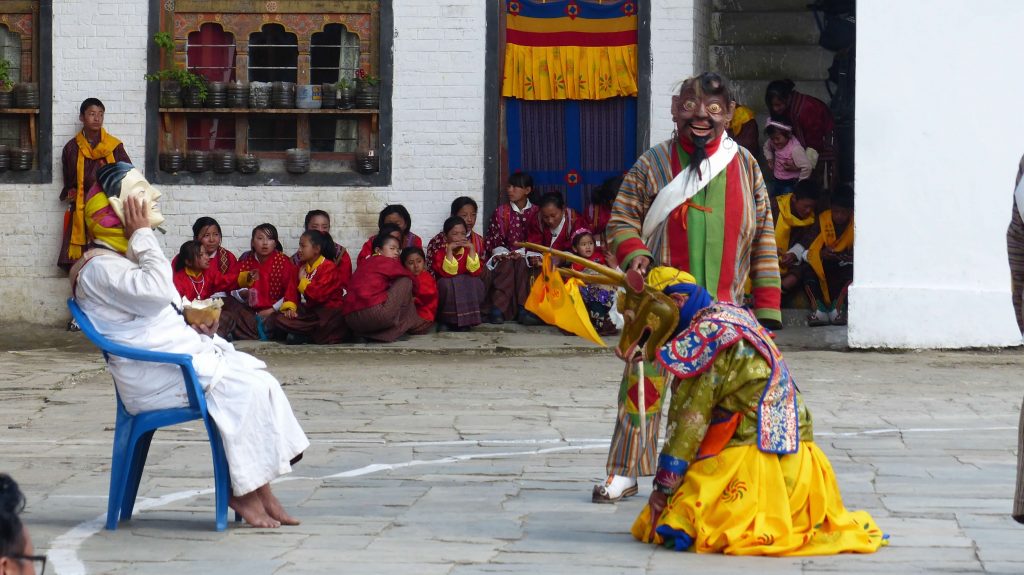
The stag begs for Milarepa’s help and help is granted; the stag comes to sit by the sage, and the hounds subside to the ground. But the hunter is furious that the yogi is interfering with his hunt and threatens to shoot him. When the hunter shoots, supposedly the arrow snaps three times, but in this dance, the green man grabs the arrow and runs it back to land in the hunter’s head. Milarepa sings his realization song. In the story, the hunter then enters Milarepa’s cave, finds that he subsists on nettles and herbs, and in admiration offers up the hound(s) as well as his bow and arrows to the sage. He follows Milarepa’s teachings and becomes known as Chira Repa, cotton-clad hunter. (Plain cotton robes were the mark of a wandering yogi.)
The second day of the tsechu began with the Dance of the Black Hat with Drums:
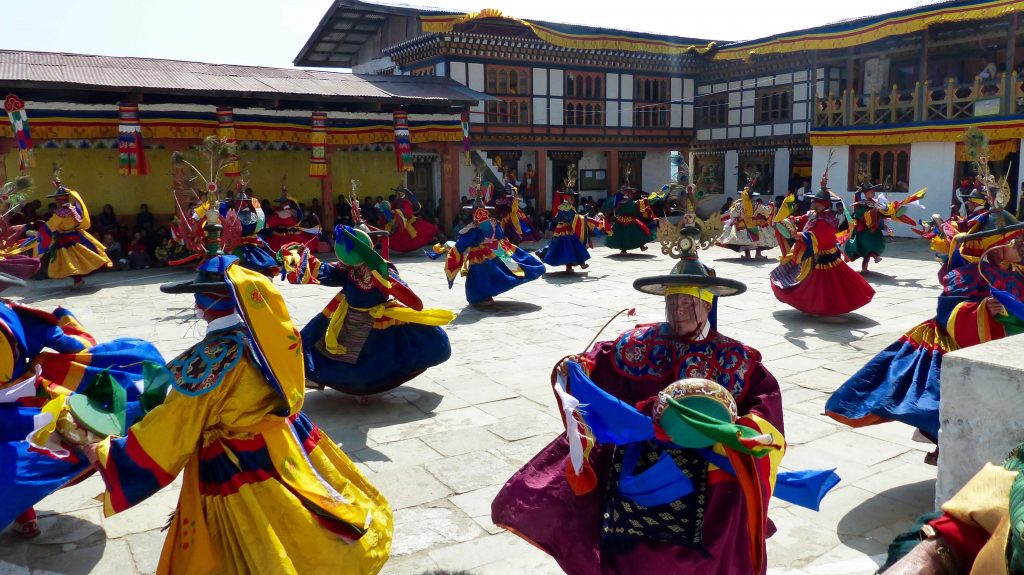
The choreography celebrates victory over obstructive spirits “and their joy and freedom at seeing the truth of transcendental wisdom. The dance stomps and buries obstructive forces and heretic beliefs.”
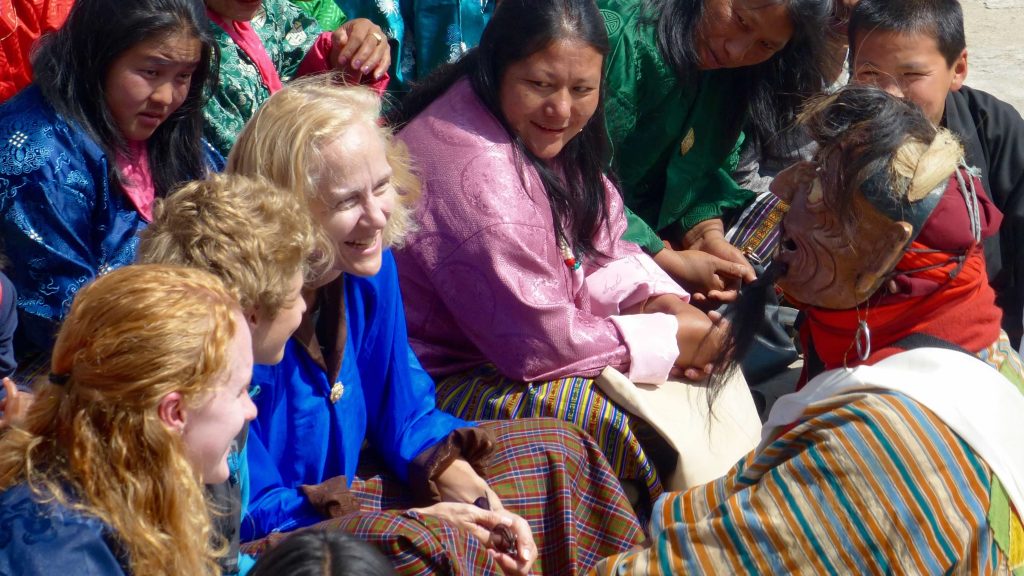
Almost no one is there when we arrive, but a small crowd of women and children come to sit with us at the edge of the circle over the course of the dance. The atsaras wander by and stop to chat.
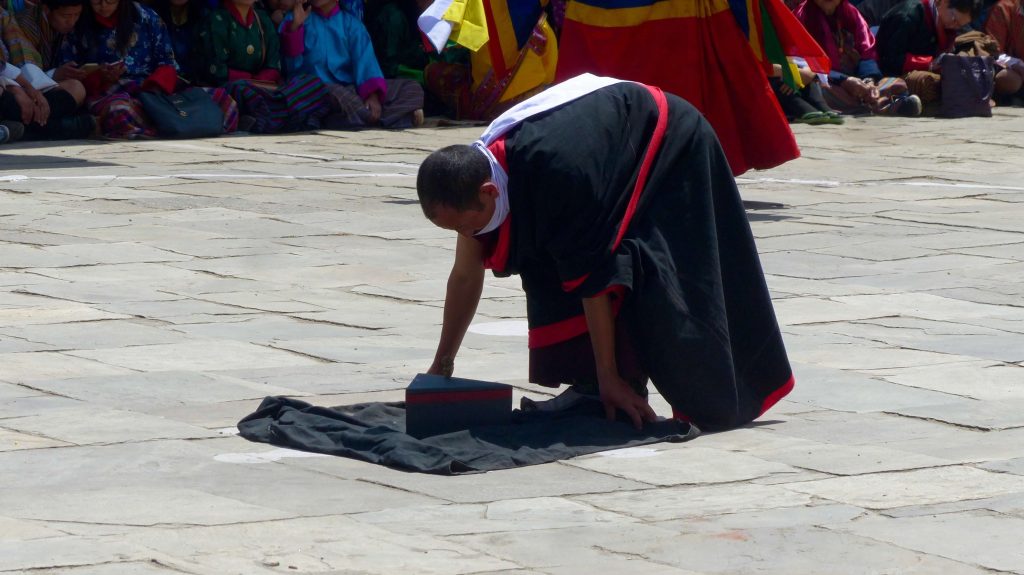
The ceremonial master lays out the three-sided receptacle once again, with the sides representing the three poisons of anger, desire, and ignorance.
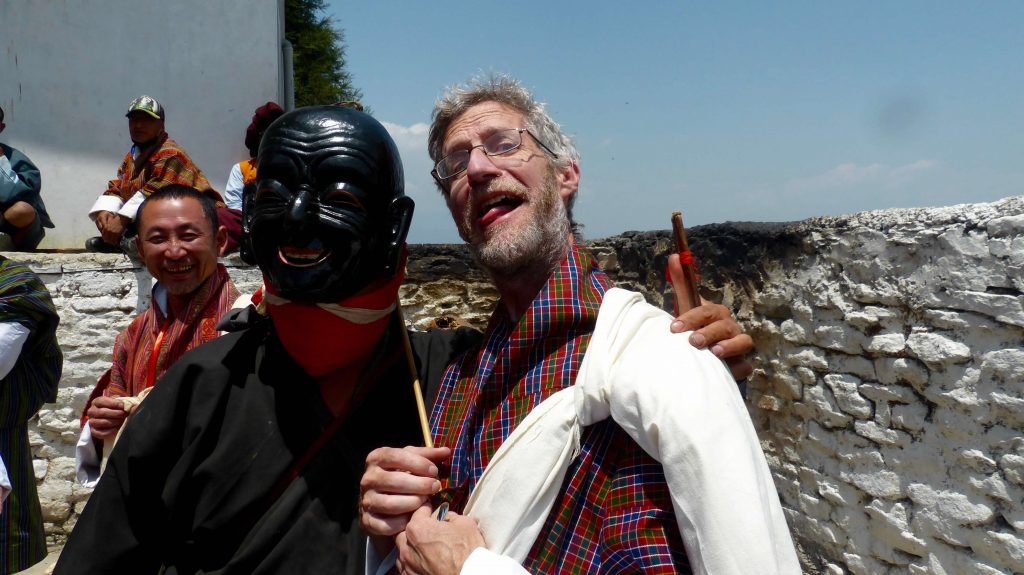
This hunter wanders the grounds, taking aim at spectators. If he “hits” you with his arrow, you have to give him money (a donation to the monastery). The hunter will feature in a dance later in the afternoon.
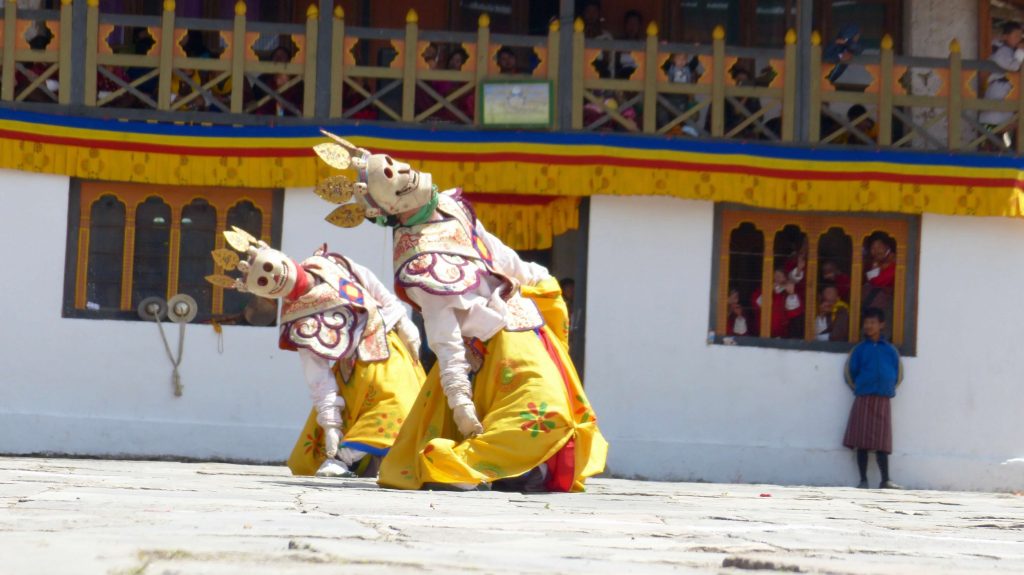
Duthro Dagmo Chezhi: Lords of the Charnel Grounds.
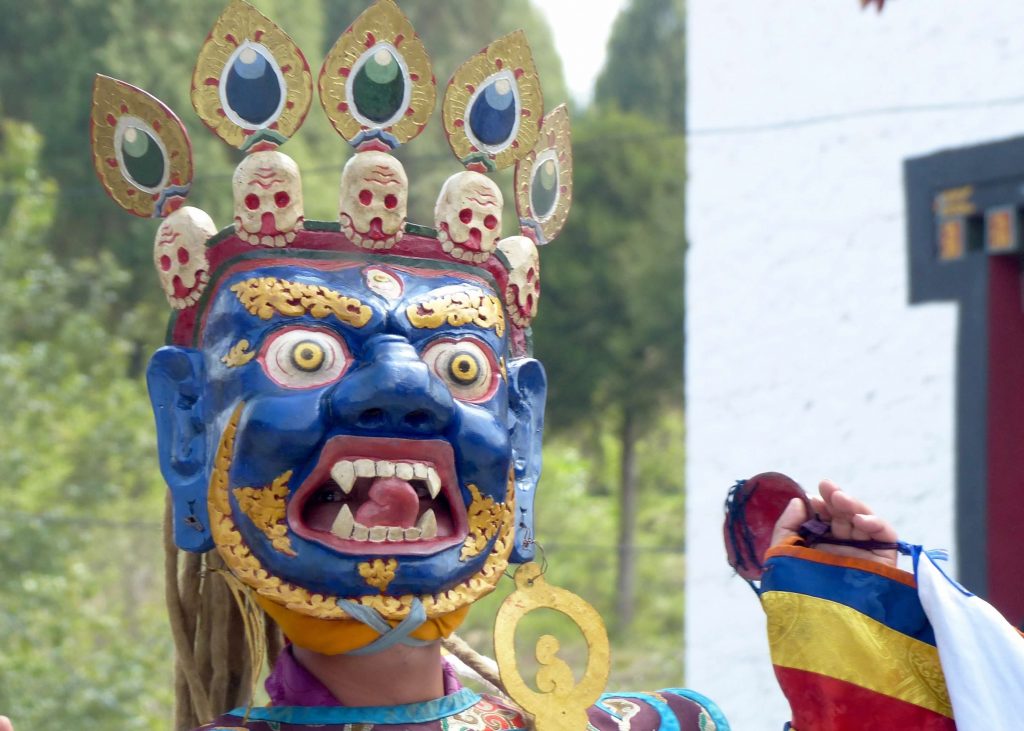
I think this was the Tum Ngam Cham: Dance of Wrathful Deities. The three eyes see past, present, and future. Watching the dance is supposed to stop beings from committing further bad karma: it liberates their departed consciousness to Buddha field.
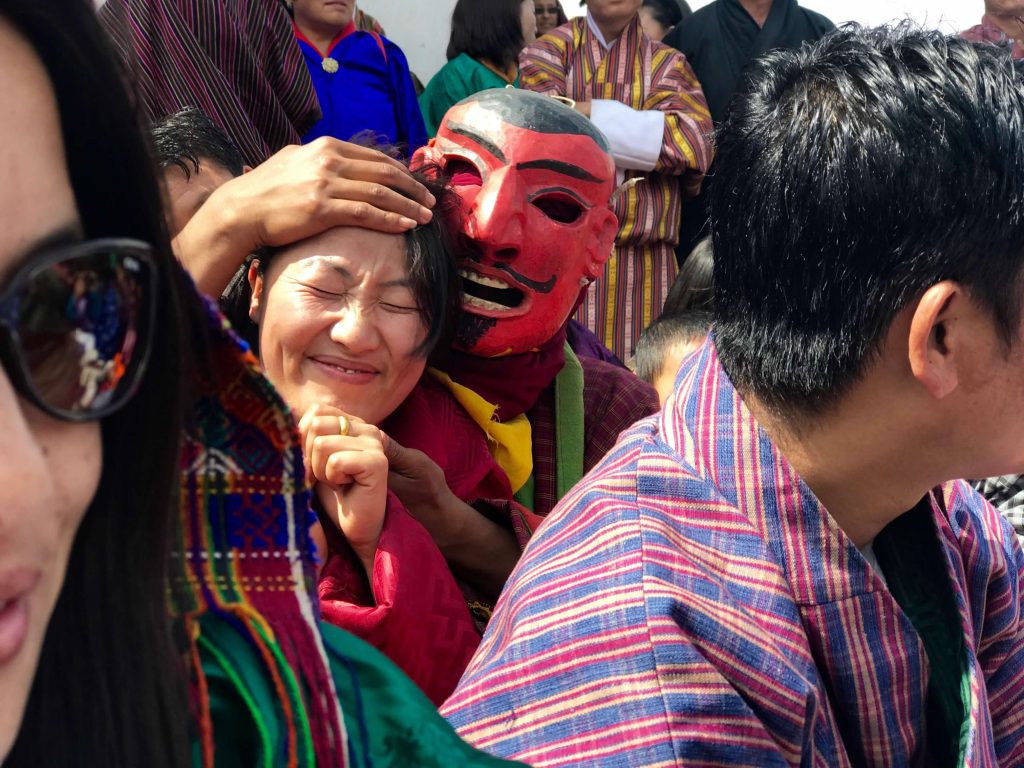
Phubee received a little too much attention from one of the atsaras…
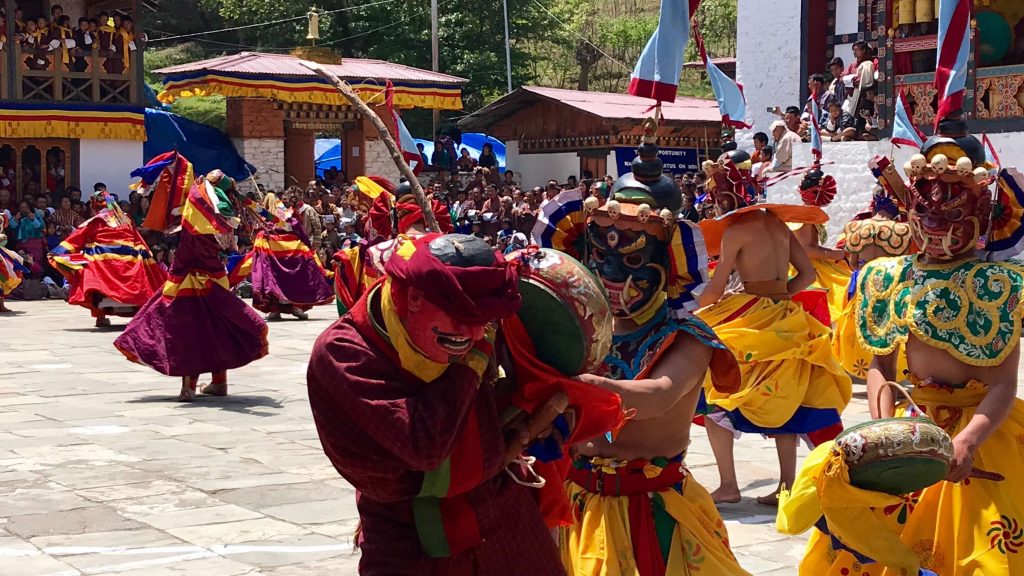
The Dance of the Ging Tsholing was a little confusing: first the Tsholings (in the purple robes) danced, representing external male and female tutelary deities subduing spirits of the ten directions. Then the yellow-skirted Tsholings came onto the courtyard: internal positive forces of sky and earth heroes. These two groups do battle, ostensibly to “remove obstacles and confusions, avert disease and famine in the ten directions.” But some people said that the dance records conflicts between the monks and the laity (or maybe different sects of Vajrayana?) and in ancient times, the sticks they fought with were sometimes studded with nails so that people could be quite badly hurt. Here our friendly atsara gets in on the action.
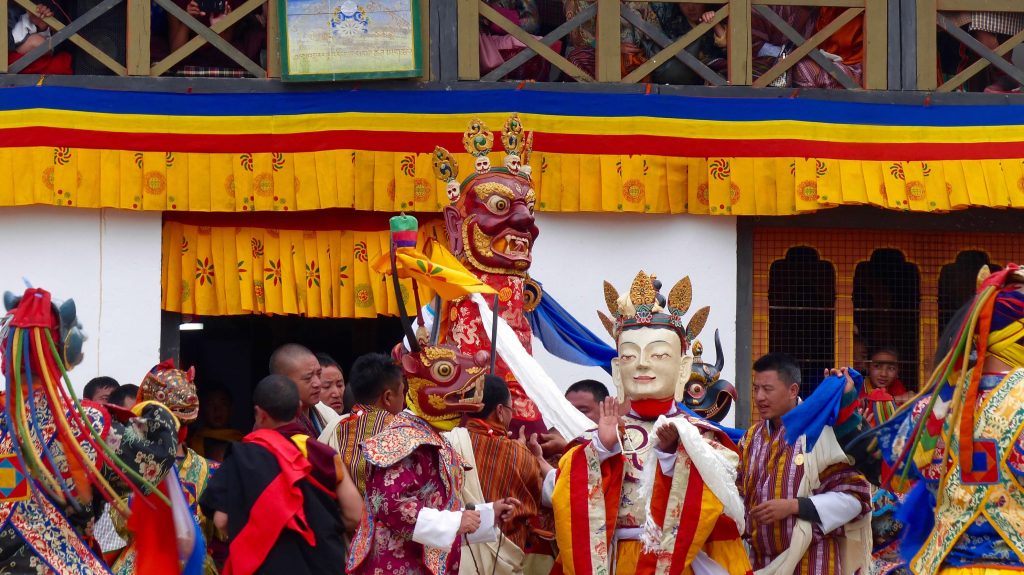
Bardo Raksha Mangcham: Dance of the Judgment of the Dead. Shinje Chogyal, a wrathful embodiment of Manjushri, wields a sword of wisdom in his right hand and a mirror of consciousness in his left. He is preceded by a white god (la karchu), also known as Avalokiteshvara, Bodhisattva of Compassion. Because Shinje Chogyal is larger than life, it takes quite a few men to maneuver his figure around the dance ground to the seat of judgment.
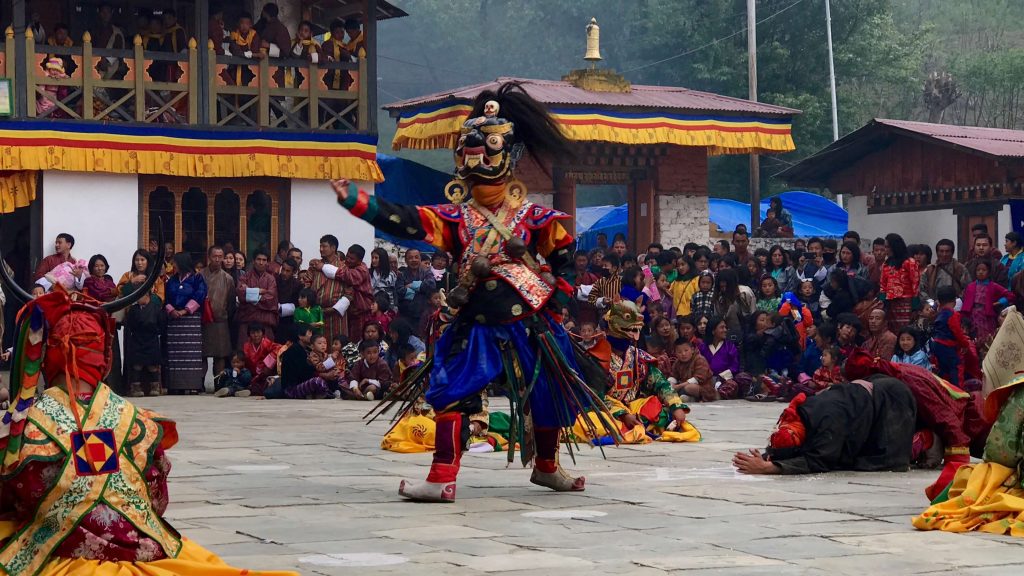
The devil’s advocate in this trial, arguing that the hunter, despite his occasional good deeds, should be turned over for torment.
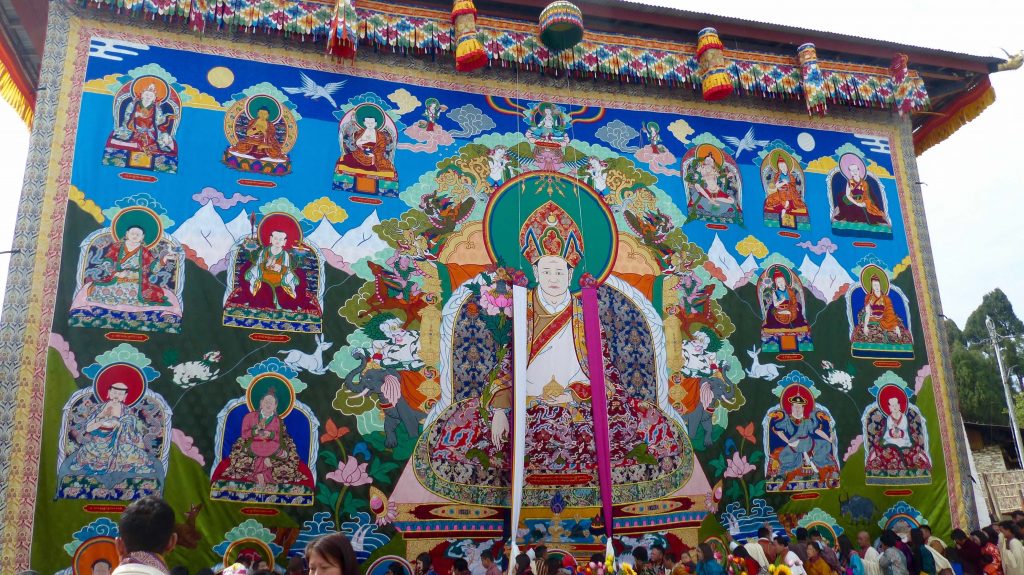
The tsechu’s third day opened with the display of a brand-new thongdrel.
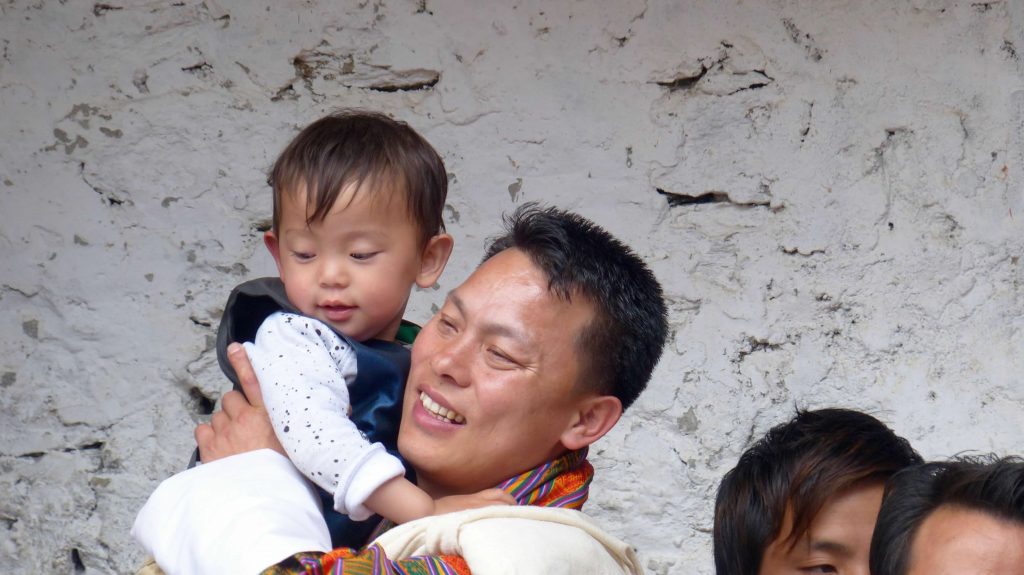
The dean was present…
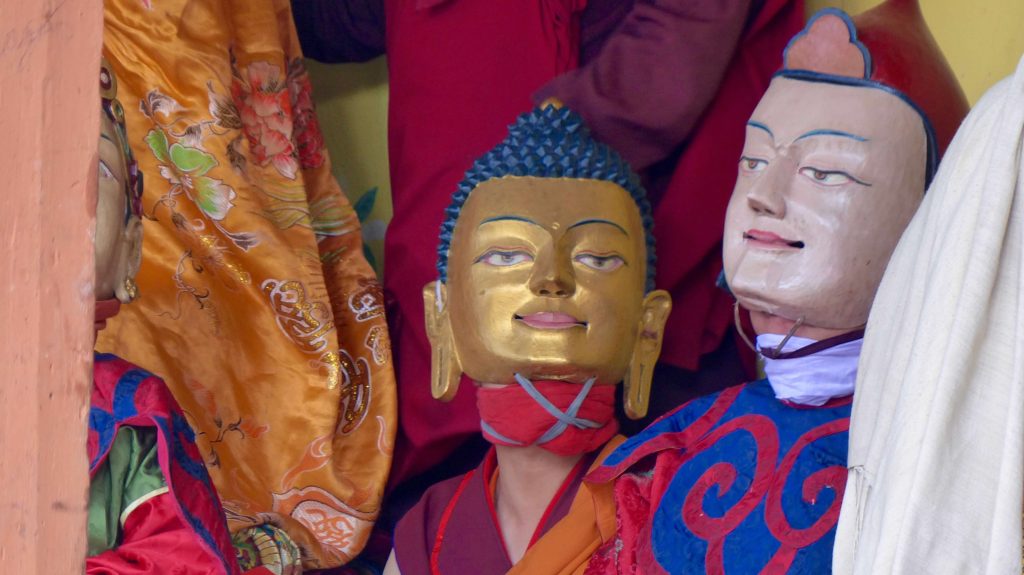
as was the Buddha, apparently,
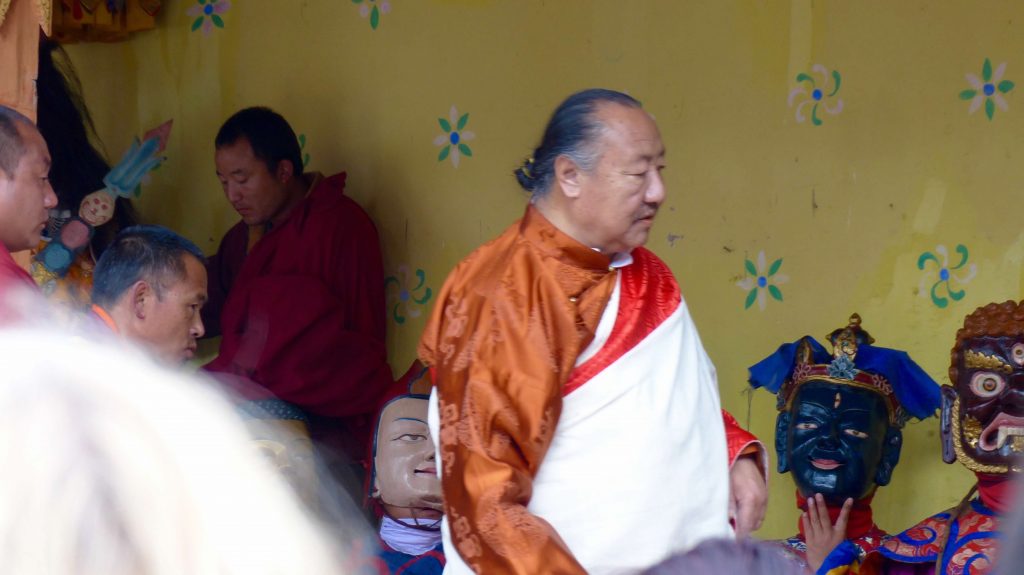
and the Yonphula Rinpoche.
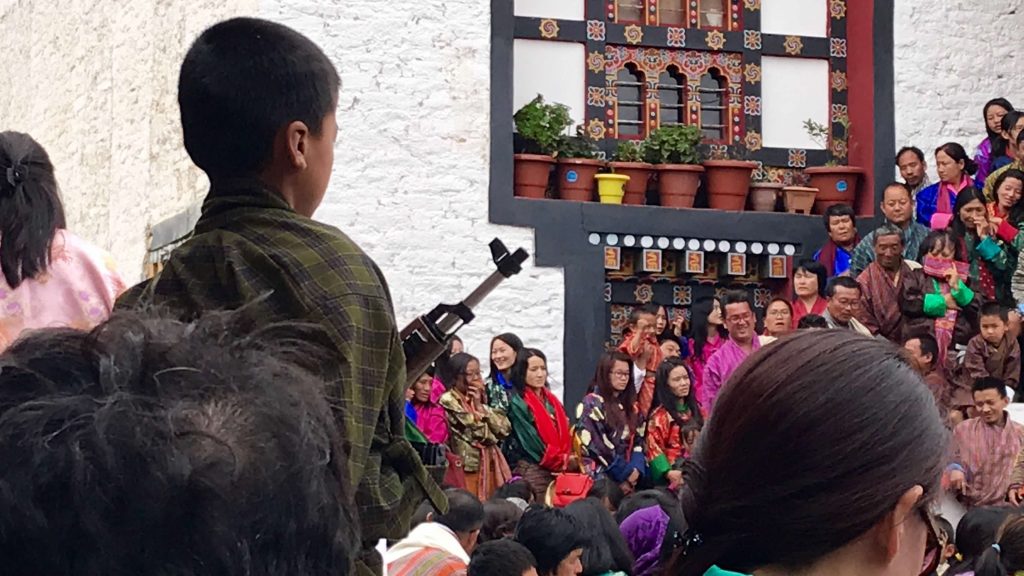
One of the odd things for us as outsiders was the presence of toy guns from the tsechu market.
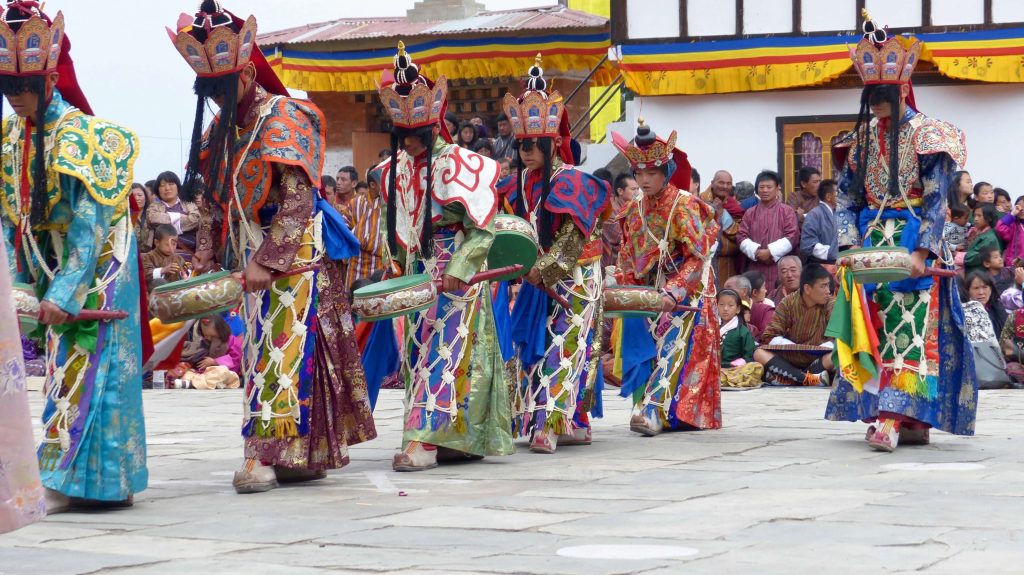
The dance of the sixteen dakinis (cross-dressed young men in “lace”).
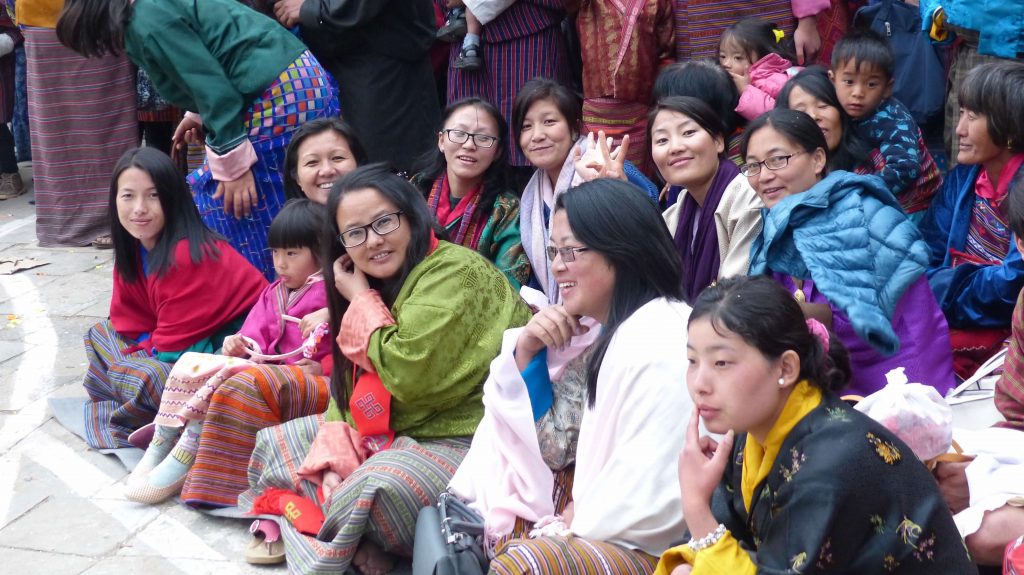
Our favorite part of the tsechu has been the company of the students–here, most of the ladies sitting together.
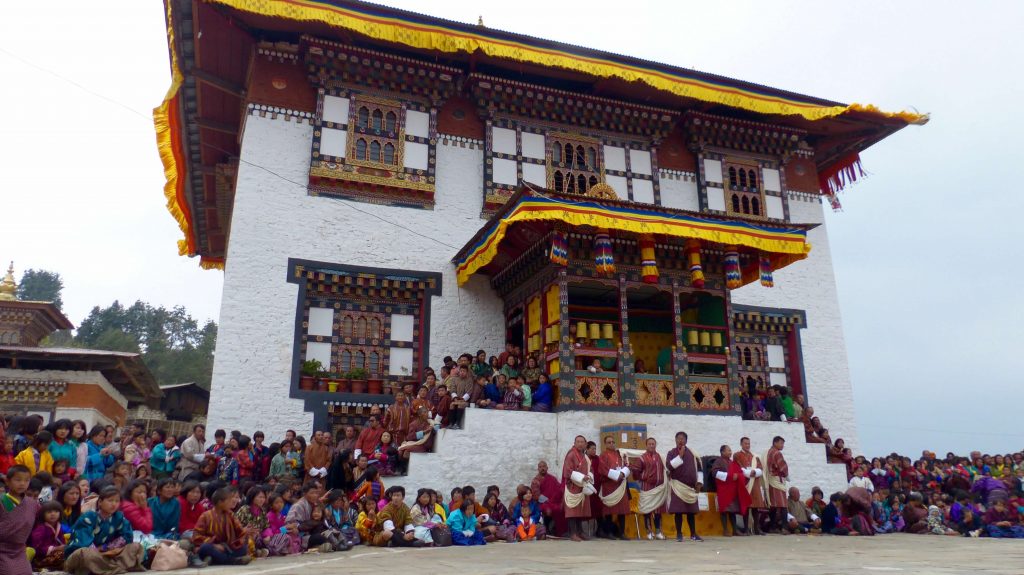
But the temple and the entire community looks very grand in all its finery.
